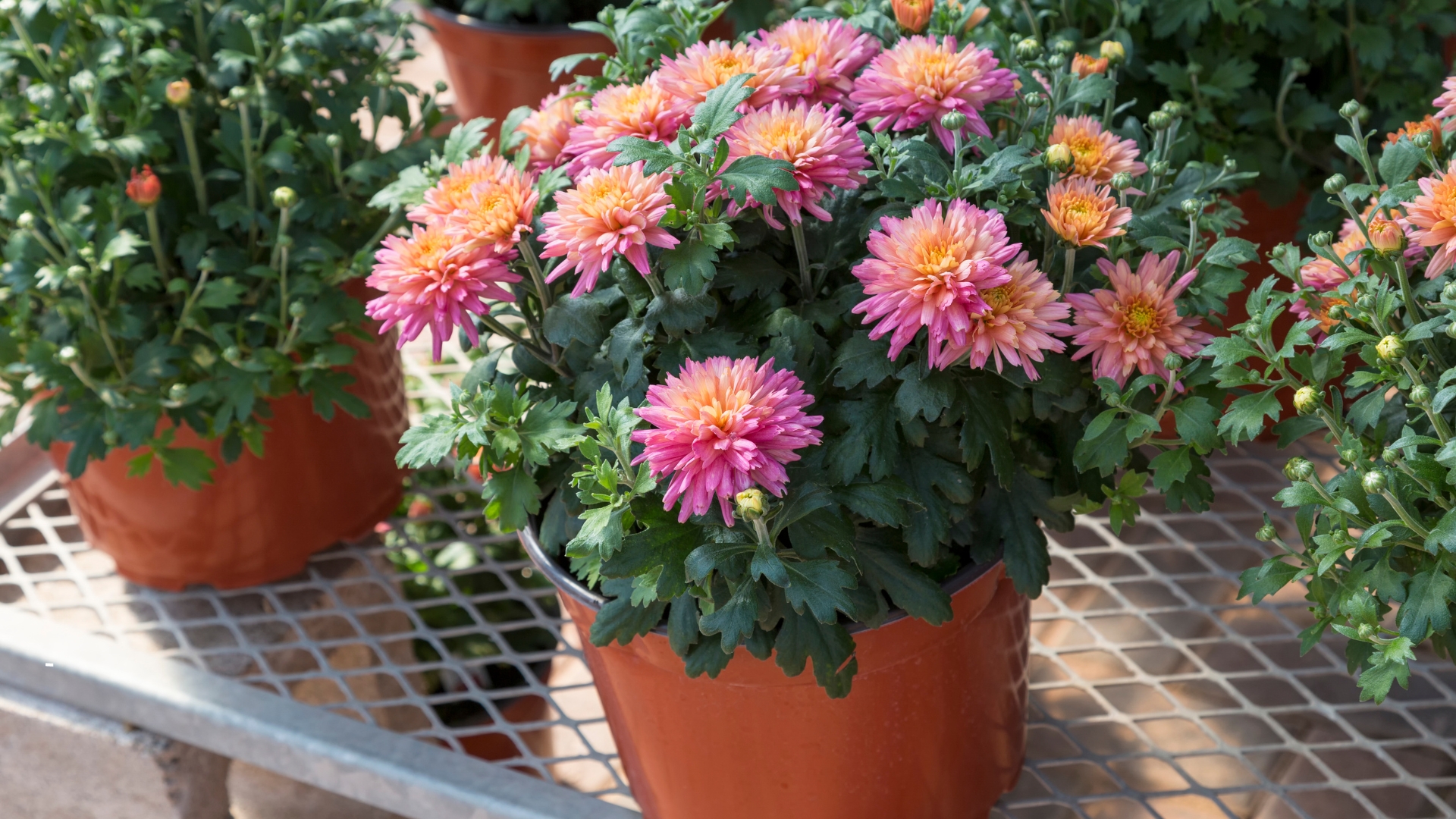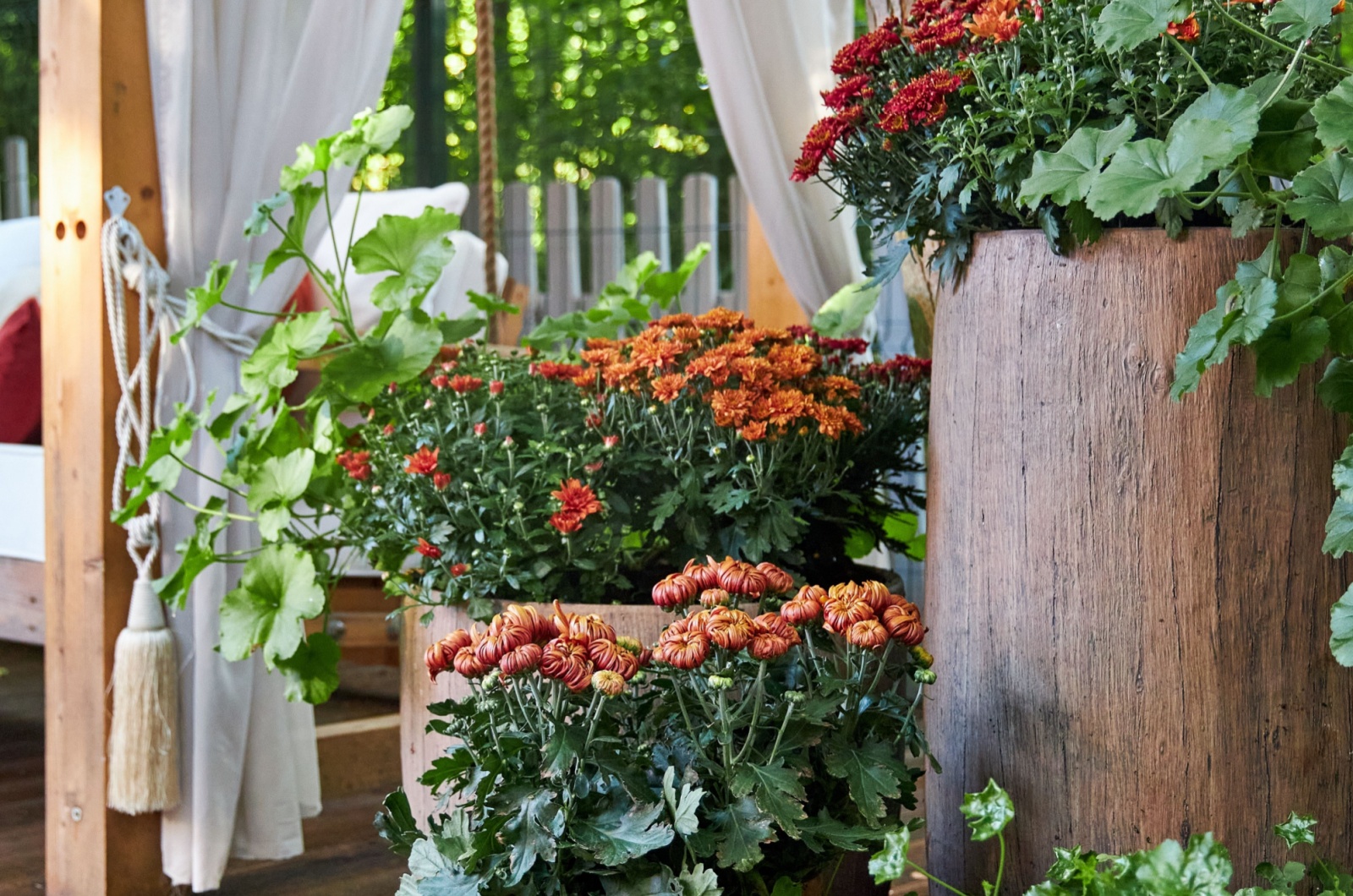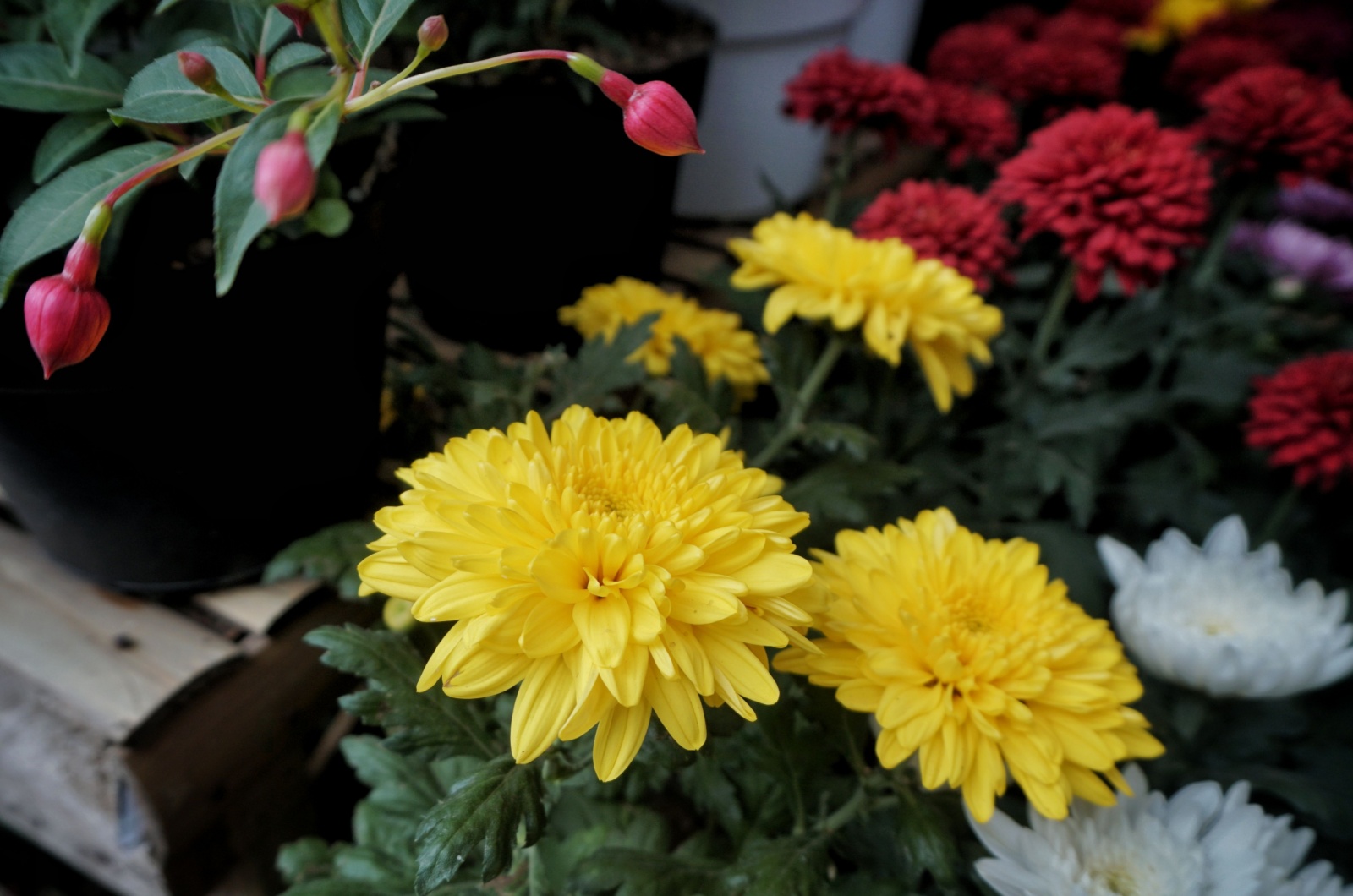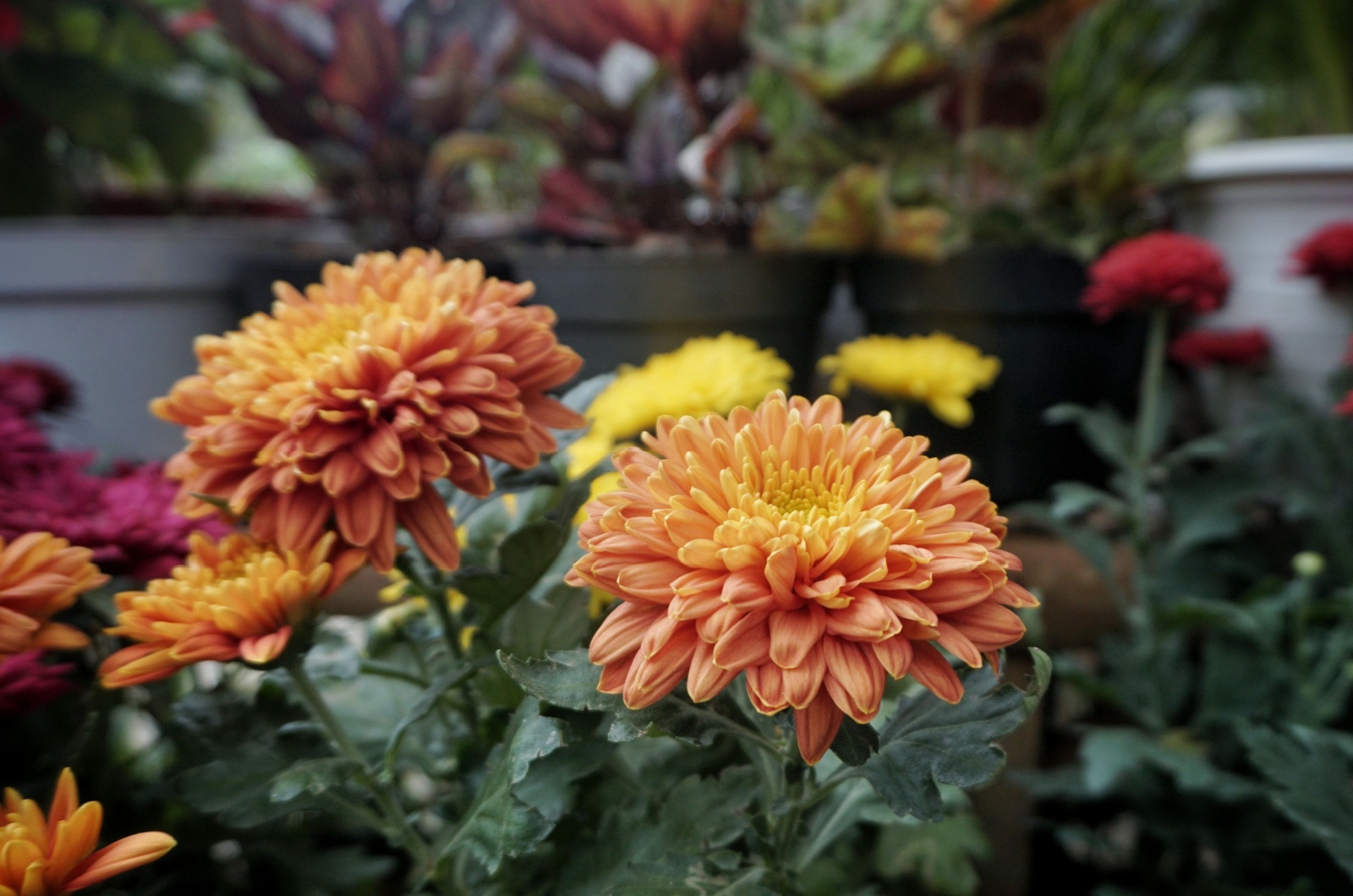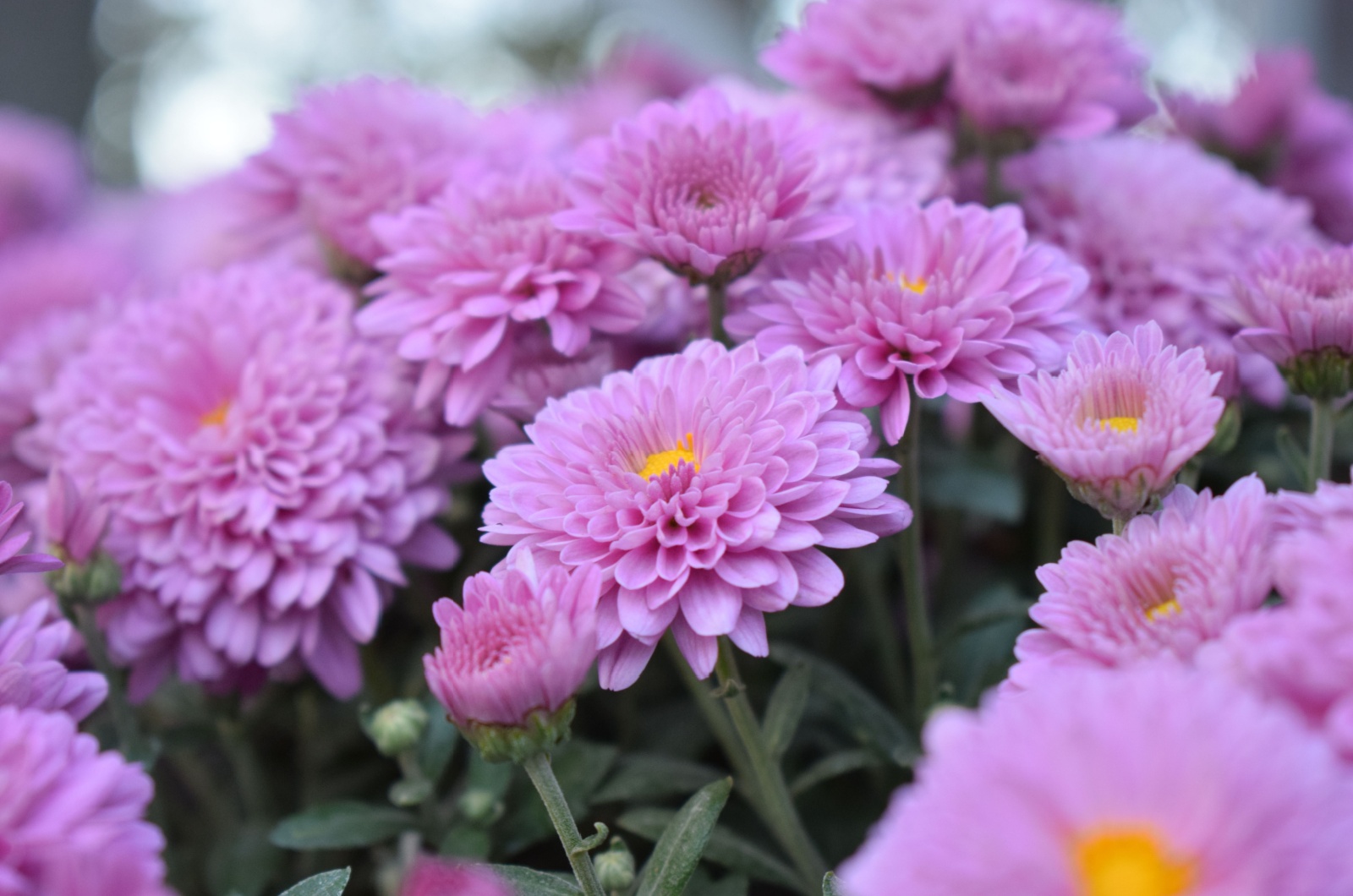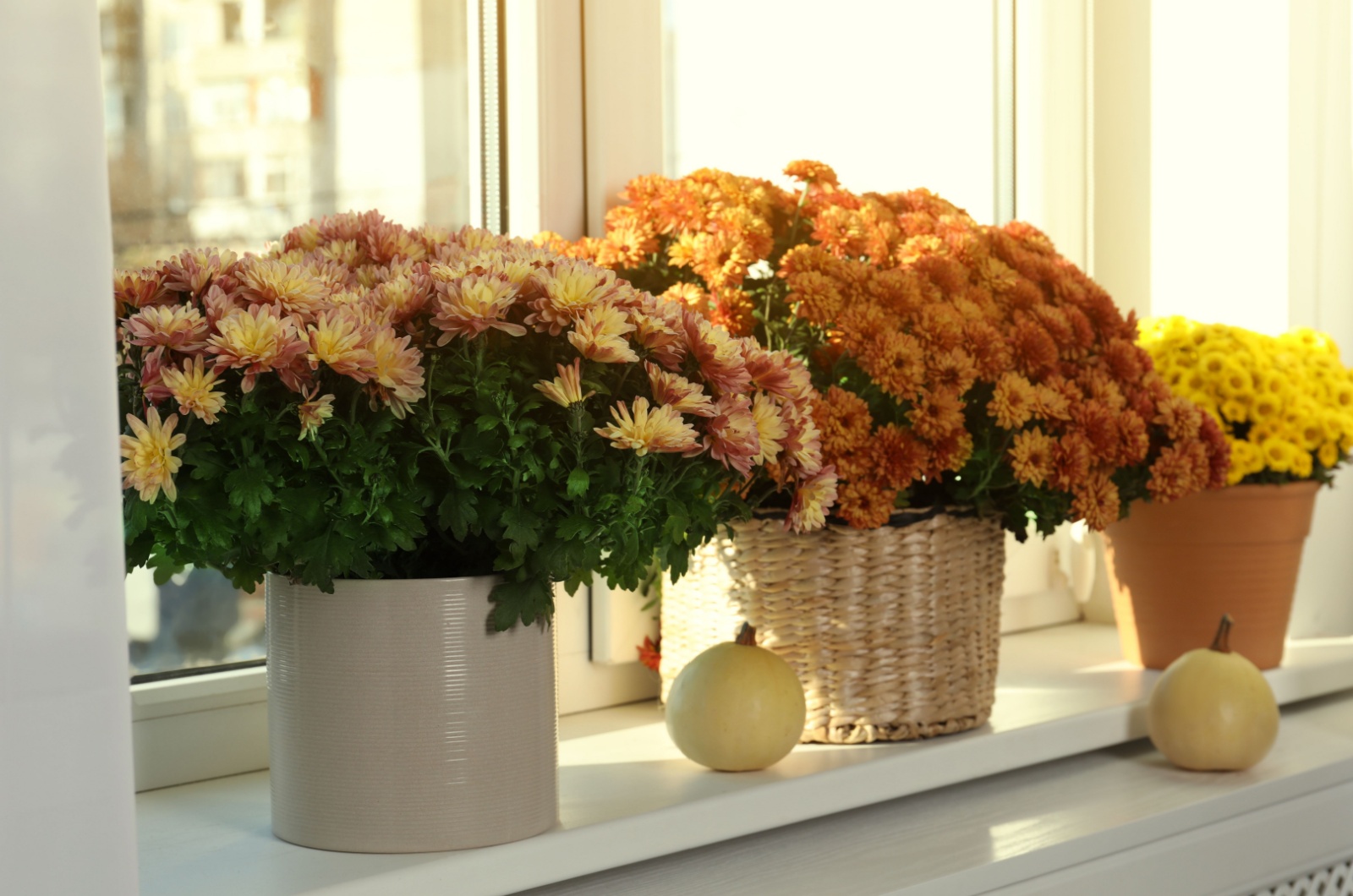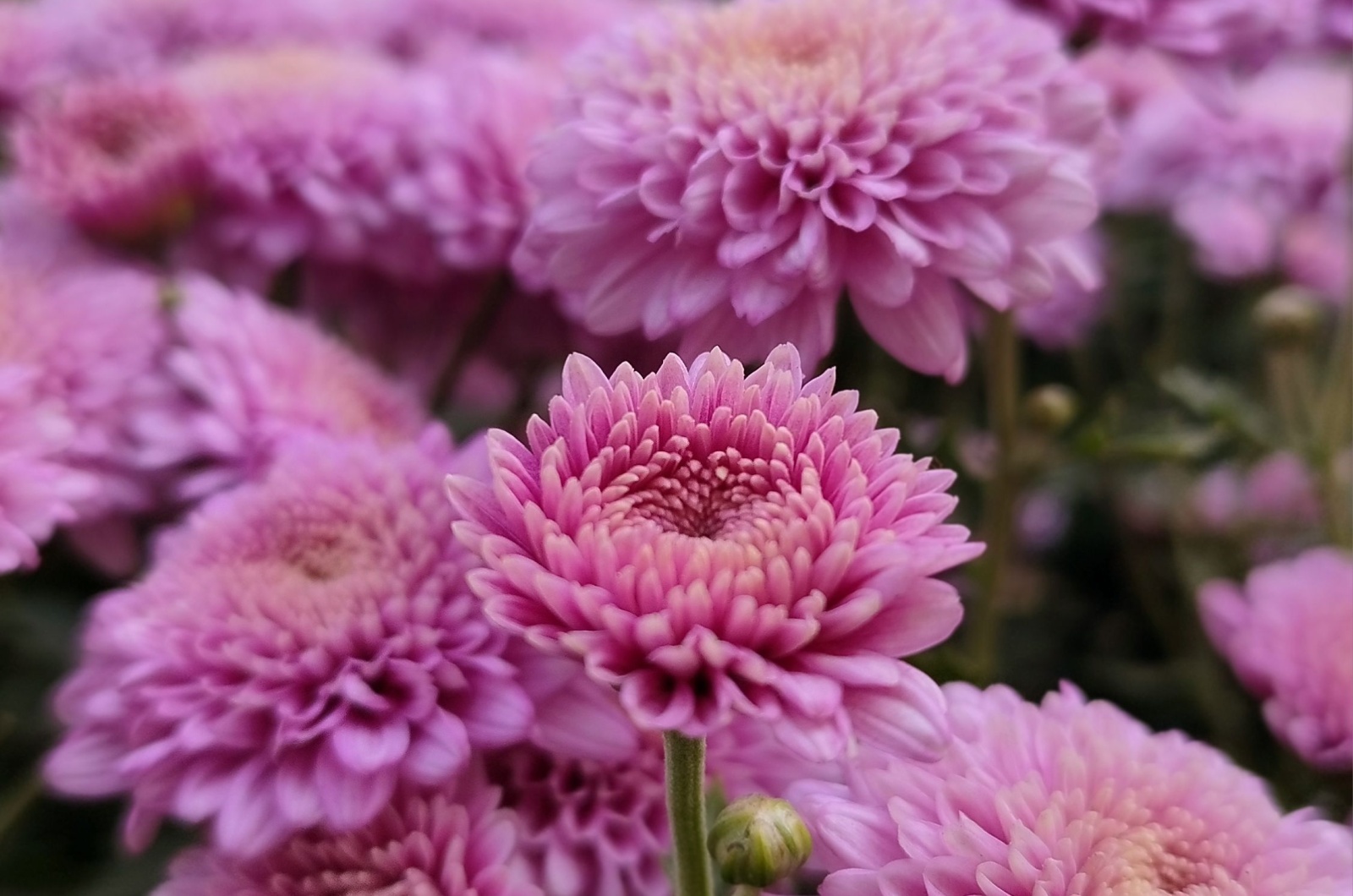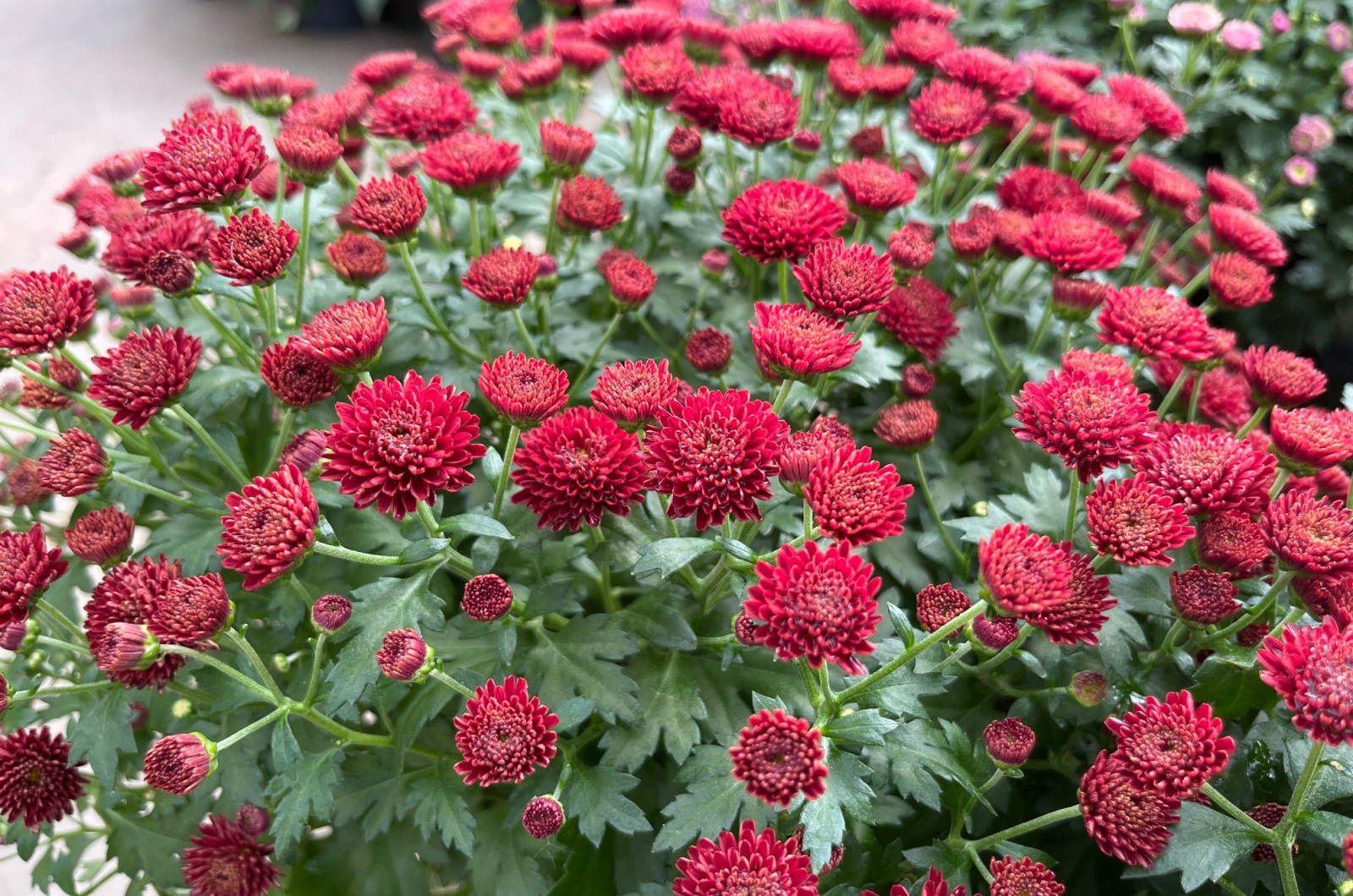It’s that time of year when most grocery store shelves are bursting with stunning chrysanthemum blossoms, and I wouldn’t trade it for the world!
But there’s one question that bothers many new gardeners: what happens after planting mums? Will they come back next year or do we have to wave them goodbye as soon as the flowering season ends?
Oh, I’ve been there, too. To save you from going in circles, I’ll show you how to tell your chrysanthemum type and how to handle them after their grand finale!
In A Nutshell…
Generally speaking, mums are frost-tender perennials, which means they’ll come back year after year on their own.
However, the crucial word here is frost-tender because these flowering beauties are grown as perennials in warm climates only.
Therefore, gardeners in cooler zones treat their chrysanthemums as annuals and they dispose of them at the end of the season.
But what many growers don’t realize is that many varieties of mums can be grown as perennials if provided with the perfect conditions after planting.
So, how can you tell which variety you have and which requirements you need to meet for your mums to continue growing?
First, A Word About Garden Mums
We’ll start with the most common types of mums in US gardens, garden mums. They’re renowned for their glorious blossoms that appear on plants in early fall.
I’ve never seen a type of plant that produces as many colorful and distinctively shaped blooms as a garden mum.
They develop from the underground structures known as stolons and they can actually withstand light frost.
So, if you live in USDA zones 5 through 9, you can treat your mums as perennials.
But there’s a catch… If you purchase potted garden mums this fall and put them outdoors, the chances they’ll survive through winter are low to zero.
You need to provide them with approximately 2 months of warmer weather to allow them to adapt fully. What’s the solution, then? It’s actually pretty simple; all you need to do is take your mums indoors to overwinter.
Next year, they’ll reward you with an abundance of blooms and will keep doing so year after year.
What About Florist Chrysanthemums?
Garden mums aren’t fond of pruning or pinching but that definitely can’t be said for the florist mums. Yes, they’re also hybrid species but their requirements are different, especially in the early growth stages.
These mums are more commonly grown as annuals than garden mums and the reason is because they don’t tolerate frost.
If you plant them in your garden during cold weather, they won’t survive. The only solution is to overwinter them and plant them outdoors once the danger of the last frost ends.
The Truth About Perennial Mums
The last type of mums are the perennial mums, and their main feature is that they can survive in both cool and warm conditions.
If you want perennial mums then you should look for Chrysanthemum zawadskii species or varieties from the Rubellum Group.
The latter ones produce 2-foot-tall stems and the blossoms that occur are about 2-3 inches in diameter.
They perform well in USDA zones 4 through 8 and the blossoms come in apricot, yellow, or pink.
The zawadskii varieties are more suitable for rock gardens and they need a lot of light and quick-draining soil to survive. The blossoms appear in late fall and they come in red, white, or pink and are adorned with yellow centers.
Make Sure To Overwinter Your Chrysanthemums Correctly
I’ve mentioned overwintering mums a few times but what exactly does that mean? It means you’ll need to take them indoors or keep them in a greenhouse until soil temperatures rise next season.
Before you transplant your mums outdoors, the essential thing is to check the first expected fall frost date and plan to transplant your mums about 2 months before.
When planting these mums, make sure to dig a hole as deep as the rootball and twice as wide.
Add a lot of organic matter to encourage your mums to generate robust stolons and roots so they survive through cooler months.
If you couldn’t plant your mums in time for some reason, then keep them indoors until spring arrives. Make sure to provide them with enough bright light and transplant them outdoors once the danger of frost ends.
Don’t Forget To Take The Cuttings
Did you know that you can quickly expand your chrysanthemum collection by taking the cuttings in late spring or early summer?
All you need to do is to snip off 2-3 inch long cuttings from the shoot ends. Put them in a rooting medium such as perlite or standard potting soil.
It typically takes 3-4 weeks for the chrysanthemum cuttings to develop new roots if provided with dappled shade and moist soil.
Once the roots are about 2 inches long, it’s time to transplant your mums to your pots or flower beds.
And Here Are Some Tips To Grow Mums Outdoors
Mums aren’t hard to maintain but there are a few things to keep in mind. First, they need a lot of organic matter in their growing substrate and it should be porous and free-draining.
If you need to transplant your mums, it’s always best to do it in spring.
I always use organic fertilizer for my mums to encourage them to bloom abundantly and I add it three times during the growing season.
If you grow florist mums, make sure to pinch them so that there’s a flower or two on a single stem.
And that’s all you need to know about the different types of mums! Simply follow our advice and make your chrysanthemum garden the envy of the neighborhood!

